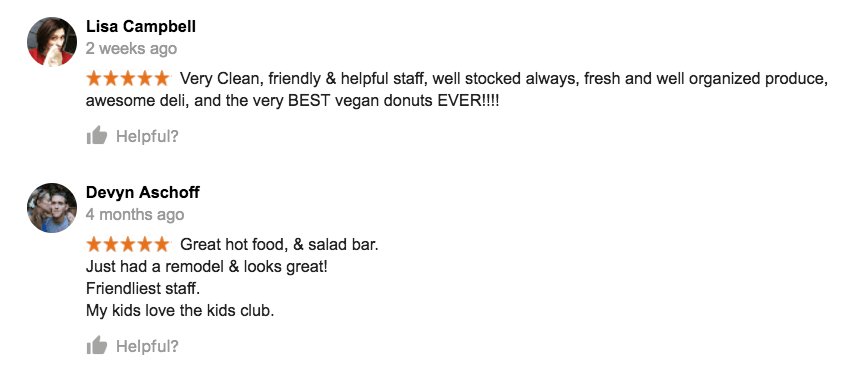
How a Strong Value Proposition Fuels Growth and Conversions
When you focus on a value proposition that is aligned and optimized to your target consumer, you will see more effective online growth and conversions.
In July of 1994, a 30-year-old computer scientist quit his job and borrowed money from his parents to start an internet company. He launched in 1995, and within two months he was selling $20K per week in products.
Within 10 years, annual net sales revenue hit almost $7B. That figure climbed to over $107B by the end of 2015.
According to Jeff Bezos, the entrepreneur behind that wildly successful company, Amazon is “stubborn on vision,” but “flexible on details.”
What is the vision that fueled such a meteoric rise in sales?
A laser focused value proposition aligned to their target consumer.
It reads like this:
“Our vision is to be Earth’s most customer centric company; to build a place where people can come to find and discover anything they might want to buy online.”
How well do you think Amazon has adhered to the vision? Does it accurately describe the company today?
The most important part of any business is the value it provides to others. For Amazon, that value is clear. Amazon carries hundreds of millions of products on its seemingly endless digital shelves. Amazon makes it easy for you to find what you want and order it immediately.
You can see great success online as well by developing and testing your own value proposition. What’s more is that the more effective your value proposition, the more effective your growth and conversions will be. Here is how to get started forming your own, with examples.
What Value Do You Provide To Your Consumers?
To replicate the success of a company like Amazon, you can’t just copy them. Every business and market is different. Your value proposition describes the unique value you propose to bring to the marketplace. It’s the reason your company exists. It’s what differentiates you from your competition.
Regardless the size of the business or the niche your business operates in, it is essential that you be absolutely clear about the value your company provides. When you don’t provide value that your consumers need or you do provide value that your consumers don’t need, your conversions will suffer.
This alignment is important. When your benefits don’t align with customer needs, your consumers will be less engaged and look elsewhere. Do you know your consumers? What do they need most? The best speed? Quality? Prices?
Discussions about “How much revenue can we generate?” must always be preceded and informed by “How much value can we provide.”
This may seem to be an easy and obvious concept. In actuality, it is a critical mindset that’s extremely difficult to adopt and maintain.
Businesses provide value. Consumers purchase based on value.
Your success will directly correlate to the amount of value consumers place on your offer. From the consumer’s standpoint: Value = Benefits – Cost.

How to Craft Effective Value Propositions
To create an effective value proposition, you must look inward to your own capabilities and outward to the needs of the market segment you serve. The intersection of those two considerations is where your market potential lies. The greater the alignment between them, the greater the opportunity for conversions.
Value propositions should describe three things:
- What unique value your company aims to provide
- Who your company provides that value to
- How your company plans to get that done
To help clarify the concept, let’s look at several value propositions to see how others have defined themselves.
The Amazon Value Proposition
We’ve already noted Amazon’s intention: “Our vision is to be Earth’s most customer centric company; to build a place where people can come to find and discover anything they might want to buy online.”
Here’s how their value proposition breaks down:
What: To be the Earth’s most customer centric company.
How: By building a place where people can come to find and discover goods online.
Who: Those who want to buy things online.
Note that Jeff Bezos could see the future coming. His hunch was that the internet would grow and people would find value in shopping online. By providing that place, he positioned Amazon as the go-to place for online shoppers.
The Southwest Airlines Value Proposition
There’s a difference between a company’s values and their value proposition.
Values cover things like integrity, safety, and fair prices. And while most companies cover purpose, vision, values, and mission in their various public-facing declarations, it can be tough to identify which of those cuts to the core of the business to amplify the value that business provides.
For Southwest Airlines, we’ll pull from their mission statement:
“The mission of Southwest Airlines is dedication to the highest quality of Customer Service delivered with a sense of warmth, friendliness, individual pride, and Company Spirit.”
For Southwest Airlines, the “Who” part of equation is understood as “their customers” or “airline passengers.” Many companies choose to do the same, assuming their “What” and “How” will affect everyone the company serves:
What: Provide the highest quality Customer Service
How: By treating customers with warmth, friendliness, pride, and Spirit.
Who: [Airline passengers]
Has Southwest Airlines succeeded at delivering the promised value? Here’s a review (below) from customer who seems to think so. This is an example of great social proof, by the way.

The Whole Foods Value Proposition
The value propositions for Amazon and Southwest Airlines are clear, concise, and easily measured.
Not so for Whole Foods:
“At Whole Foods Market®, “healthy” means a whole lot more. It goes beyond good for you, to also encompass the greater good. Whether you’re hungry for better, or simply food-curious, we offer a place for you to shop where value is inseparable from values.”
While the apparent intent is to position the company as socially conscious, the usability and effectiveness of the value proposition suffers from its inherent ambiguity.
What: A place to shop where value is inseparable from values.
How: By going beyond “good for you” to encompass “the greater good.”
Who: Those who are hungry for or curious about food.
An important observation here is that the value proposition is not just a consumer-facing document. Powerful value propositions govern the internal workings of the company and get the team pulling together as a team should.
You can see that focus in the Amazon website and you can see it in the way Southwest Airlines treats customers.
Whole Foods tends to draw socially conscious customers, and many of their foods are rated according to socially conscious production ratings… but the primary customer-perceived value of Whole Foods Market may lie elsewhere.
Certainly, people want to be friendly to the planet and to animals, but most shoppers who will pay extra for organic or other foods deemed “better” are likely to be more concerned about the health benefits to themselves and their families than in the social benefits.
We’re not saying social isn’t important; we’re simply making an observation about the Whole Foods business model and customer base.
Do you agree? What percentage of Whole Foods shoppers are there because the company is socially conscious? How many of the employees carry the vision of social consciousness into their daily activities?
The most powerful value propositions express reality. They are grounded in what the company actually does, and they are obvious to the consumer.
Here are two customer reviews for Whole Foods. What would you say their strong point is?

What’s Your Value Proposition?
Take some time to consider the business defining statements your company has created. Pull from them the most powerful and unique examples of exactly WHAT you do, WHO they serve, and WHO your products or services benefit. Use that insight to write a concise value proposition for your company.
Test copy based on your value proposition on your website. Ask your customers for feedback. Do they agree with the statement?
Are your customers quick to agree that your value proposition is integral to how they perceive you? Is your value proposition written in the language they use to describe you, or have you resorted to industry-speak or academic-speak that alienates the customer?
Now Keep Focused
Once you’re positive that your value proposition is clear, accurate, and powerful, start using it everywhere. Your value proposition should be broadcast internally and externally, including at key conversion points on your website. Doing so will boost your customer experience ratings through the roof.
When your consumers buy into the value of what you’re doing, and how you’re doing it, you’ll begin seeing improvements in conversion rates, customer satisfaction, and many other metrics you use to judge the success of your business.
People don’t go to Amazon to book a flight, and they don’t go to Southwest Airlines to purchase a blender. You can’t be all things to all people, but you can be the first choice for some people when it comes to some of the things they need.
Know that audience. Speak to that audience. Serve that audience.
At The Good, we help ecommerce and lead generation businesses grow online sales and conversions through data-backed website design and user experience testing.
How about you?

About the Author
Jon MacDonald
Jon MacDonald is founder and President of The Good, a digital experience optimization firm that has achieved results for some of the largest companies including Adobe, Nike, Xerox, Verizon, Intel and more. Jon regularly contributes to publications like Entrepreneur and Inc.